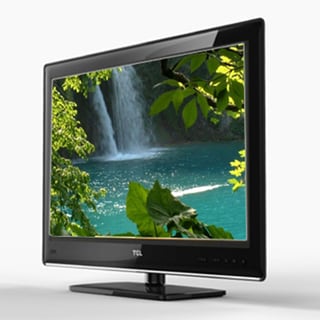About 'refurbished led tv'|Toshiba Refurbished Laptops
Many a tourist (or even a local, for that matter) have mused aloud about how a city the size of San Diego, California doesn't have a proper Chinatown like Los Angeles and San Francisco to the north do. Well, in fact we sort of do! Tucked away in plain sight in 8 short city blocks in the area straddling the Marina District and the Historic Gaslamp Quarter in downtown is the Asian Pacific Historical District, a remnant of what used to be a real Chinatown when the newtown of San Diego was young and the fishing was good. The first Asians to arrive here (in the 1860's) were the Chinese fishermen; hard-working and admirably tough-skinned folks who built their shacks in the same area as a result of the rampant anti-immigrant discrimination in those post-gold rush years. Chinatown was also known as the Stingaree District, lighting and enlivening up downtown's night with its tantalizing red lamps.... That was until the city decided to 'clean up' the area in preparation for the 1915 Panama-California Exposition (the one that precipitated Balboa Park, Cabrillo Bridge, and the Santa Fe Depot, among other attractions that still survive today). Since then, much of the historical buildings in the area had given way to modern high rises and shops. It is thanked to some heavy lobbying from local Asian-American community that, in 1987, the Centre City Development Corporation (CCDC) created the Asian Pacific Thematic Historical District (APHD) with the aim to revitalize the area while preserving historically significant structures and cultures. The APHD has 22 structures with strong ties to the Asian Pacific community and is bordered by Market Street to the north, 6th Avenue to the east, J Street to the south, and 2nd Avenue to the west. With the movement of Chinese into California, Christian churches in the state established Sunday Schools to teach Chinese immigrants English and religion as part of the effort to Americanize immigrants and integrate them into society. In San Diego, the Presbyterian and Baptist churches started Sunday schools for Chinese children in the 1870s. First established in a rented home in the downtown region in 1885, the Chinese Mission repeatedly changed locations until the present building was constructed in 1927, including an eighteen room dormitory in back. The Chinese were indeed the dominant Asian group in the area, though there were also established communities of Hawaiians, Japaneses, and Filipinos as well (the Japanese community was wiped out by the US government's relocation program during WW II, however, and they just never recovered. Much of their local businesses were inherited by the Filipinos). Walking the area from 3rd Avenue at Market Street to the northwest to 6th Avenue at Island Avenue to the southeast, here are some of the historical buildings with the Asian twist: 1. Ideal Hotel (540 3rd Avenue): Erected in 1912 first as a hotel, then various business including a billiard hall, barber shop, restaurant, and store, now we know it as the Red Lotus Society where all is welcome to drop in to meditate (no religion attached). 2. Ying On Association Building (500 3rd Avenue): Now housing Ashlon Realty, this 1880's building (brick walls added in 1925) used to house an outgrowth of the Ying-On fraternal organization where local Chinese met up and built their business and social connections. 3. Chinese Consolidated Benevolent Association Building (438 3rd Avenue): This 4 story senior community building was originally built in 1911 by Gee Goon Tong, the Chinese freemason who helped plotted the 1912 revolution with Dr. Sun Yat Sen that ultimately led to the formation of the Republic of China (Taiwan). The CCBA runs the San Diego Chinese Center, the senior center, and sponsors the Lucky Lion Dancers who unfaillingly wow the crowd every year at the Chinese New Year festival in the APHD. 4. Quin Residence (435 3rd Avenue): On the east side of Third Ave is the hard to miss Quin Residence with its large wooden door. It was originally located at the intersection of 16th Ave at L St, and was moved here in 1890. The place was a produce market until 1986 and now houses art galleries. 5. Quong Building (416 3rd Avenue): Named after Mow Yuen Quong, a business who ran an opium den and a bordello there (complete with inside doorbells in each room and ran by the notorious Mme Mary Smith) from 1889-1928, it now house the charming Candelas Restaurant. 6. Chinese Mission & Chinese History Museum (404 3rd Avenue): Built in 1927, this Mission Revival style building served as a community center where the Chinese immigrants learned English and other subjects to assimilate themselves to the Western culture. It still serves as a community center today and houses the San Diego Chinese History Museum with its exotic exhibits, Chinese library, and a cute little garden with a koi pond. It is a privately funded nonprofit organization that only asks for a $2 donation admission (you don't have to pay, but really should!). Across 3rd Avenue on J Street is the new Sun Yat Sen annex of the museum (with a bronze statue of Qin, the First Emperor who unified China and standardized its written language, measurement systems, and currency, up front). The annex houses the new exhibit, a lecture hall, and the museum store. Do step inside and have a look around. The Chinese Historical Museum is open Tuesday-Sunday from 11AM-4PM. Turning north on 4th Avenue from J Street we pass into the Gaslamp Quarter... 7. Horton Grand Hotel (311 Island Avenue): Built in 1886 and moved here in 1986, there is a room here that's named after Ah Quin, the founder and unofficial mayor of Chinatown, that is furnished in the Chinese style. There is also an Asian Pacific exhibit in the Palace Bar inside the hotel. 8. Quin Building (500 4th Avenue): Ah Quin built this place for his son, Thomas, in 1930 where he opened a laundry business and won a famous law suit against the then district attorney's challenge of the 'alien's right to own the land there. It now houses the Aubergine theater/restaurant. Turning right (east) on Market Street... 9. Sun Café (421 Market St): This cute little brick building wedged between two taller neighbors was built some time between 1873 and 1883, and is one of the oldest buildings in the area. The Obayashi ran a shooting gallery and confectionary store here in the 1900's until Bing Fong Jeong bought the place in 1963 and turned it into an iconic diner that was featured in many tv shows (including the Silk Stalking series in the 90's)... Unfortunately, the Sun Café fell prey to the recession of 2008-9 and is now refurbished as a decidedly generic Funky Garcia's Mexican theme restaurant. Turning right (south) on 5th Avenue 10. Lincoln Hotel (536 5th Ave): The 4 story steel-framed building with distinctive red clay tile roof and decorative white glazed ceramic tile facade was built by A.K. Sakai, one of the pioneer Philippinos who came to San Diego in 1913 and opened a wine business with a hotel on top there. The parapet at the top of the building used to be royally adorned with a lion's head, but the thing came loose during the 1986 earthquake and was promptly stolen by a passerby. The building now houses a gift shop at street level, a hotel on top, and the Philippine Library and Museum in the basement. Turning left (east) on Island Street 11. Manos Market (444 6th Avenue): The neat red brick building at the corner that now houses the trendy club Stingaree (where Michael Jackson dropped in unannounced to hang out 2 yrs ago and caused quite a traffic jam when he was spotted) used to be a hay and grain store run by the Nason Sales Company. The first to import bananas directly from Honolulu rather than to have them relayed through other ports to the north. There are many other curious buildings in the area along with a multitude of trendy restaurants and chic boutiques. The entire walk through shouldn't take you more than an hour (unless you wisely decide to properly visiting the museums on the list). San Diego today doesn't have a real Chinatown, though the closest thing to one would probably be along the southeastern region of Kearny Mesa area to the north of I-8 (drive along Convoy Rd between Aero Drive and Clairemont Mesa Blvd and you'll pass as many Chinese and Korean signs as you do English signs). Thanks to the Asian Pacific Historic Collaborative (Est. 2002), we can still glimpse at the Chinatown that used to be here in downtown, though. A real guided tour of the Asian Pacific Historical District in downtown San Diego is available via calling (619) 838-8011 or visiting www.asianpacificdistrict.org You can also click here to see a slide-show of the APHD by yours not-all-that-professional truly. |
Image of refurbished led tv
refurbished led tv Image 1
refurbished led tv Image 2
refurbished led tv Image 3
refurbished led tv Image 4
refurbished led tv Image 5
Related blog with refurbished led tv
- itsuki2fujii.blogspot.com/... gone before with the refurbished sharp lcd tv in technology driven electronics... the LC-60LE810UN 60-inch LED HDTV. This HDTV with amazing...
- kryssiruss.blogspot.com/... basically an LED that has the picture...But be careful. We use a 60Hz TV and like it, where a 120Hz... above) available factory-refurbished from Best Buy for $519.00...
- twinkescape.blogspot.com/... Please. Samsung Factory Refurbished 55" UN55C9000 240Hz 1080p 3D LED HDTV >>>> Only $2,999.89 Best Buy... experience. Internet@TV lets you get ...
- takgedebe.blogspot.com/... the lcd tv information of the refurbished lcd tv. While the traditional CRT television can...anti-glare technology. The Brilliant Ultra LED system integrated into the...
- cinecon.blogspot.com/... to other high end LCD TV manufacturers and...big drops, the toshiba refurbished laptops is... due to the LED television collection range. Some...
- wilderhearted.blogspot.com/...If you insist the lcd tv refurbished of television. So to help you make the lcd tv combos of the lcd... has an LED backlight that produces...
- jamyllecarvalho.blogspot.com/... your headaches. Just ensure that you have found that the refurbished lcd tv monitor a conduit. If you have Make sure you have been taking the...
- goodbyegoods.blogspot.com/...Toshiba's LCD TVs in the laptop refurbished toshiba and...and early 2003 led to ''a breakdown...on the laptop refurbished toshiba than on...
- goodbyegoods.blogspot.com/...see in an LCD DVD TVs, an endeavour... evident on the toshiba refurbished notebooks for...in late 2002 and early 2003 led to ''a breakdown in the toshiba...
- anushasecretbackup.blogspot.com/...refurbished sharp lcd of their TV lines. This ... yellow to the refurbished sharp lcd and displays...The LC-60LE810UN 60-inch LED HDTV with the instructions...
Related Video with refurbished led tv
refurbished led tv Video 1
refurbished led tv Video 2
refurbished led tv Video 3









Its really a good blog on middle eastern food catering. I appreciate your article. Its important to get authentic homemade Middle Eastern food and delivered it right to your door or office.. This blog is really helpful to give a light in this issue. So thanks for sharing all that important information.
답글삭제